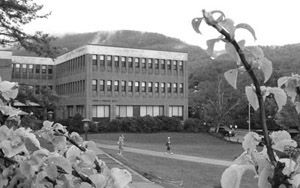MAT 3130 - Introduction to Differential Equations

Fall 2018 - Projects
Laboratories
All submissions must be in pdf format as a single file (not a compressed folder or group of files - one file) and submitted via a shared google drive folder. No other formats will receive credit. The name of the file should be "yourlastname_labX.pdf". The file should be placed in a google drive folder named "yourlastname_ode" which should be shared with the instructor.The write-up for a project must be typed (LaTeX preferred but not required) and have the following:
1. Title, Author, Date
2. Titled sections for Introduction, Methods, Results, Discussion, References. More sections may be needed depending on the project.
3. Any code should be included and labelled in a section titled Appendix
4. Any graph, plot, or figure must have a numbered figure caption with a careful description of the figure and its relevant features as pertaining to the project. All figures must be included within the writeup. Figures in the Appendix will only be used to assess partial credit for incorrect plots contained in the main sections.
5. Web references should include "date accessed" in the reference in addition to the other standard documentation.
Projects that are turned in late will count a maximum of 80% of the full points if they are turned in late, but within a week. Projects turned in later than the same week in which it is due will be worth a maximum of 50% of the full points. No project (including the extra credit) will be accepted for credit after reading day.
Laboratory 1 (individual, but help is ok)
In a single pdf file, submit a photo you have taken and a short poem that you write about math. Your name should be at the top of the file. The file should have the name: "yourlastname_lab0.pdf".
Laboratory 2 (individual, but help is ok)
Use the model in problem 23 in Section 1.9 and explain in detail how to visualize the solution to the differential equation using the Maple software package. Include:
- answer the question for part (d) by numerical investigation.
- either dsolve or DEplot notation and visualization.
- an explanation of the details of the code.
- solution curves for different initial conditions with different colors.
- the Maple code should be included as needed through the paper and the full code should be included as an appendix.
Laboratory 3 (individual, but help is ok)
Create an animation of a two dimensional bifurcation as a parameter is changed. The parameter should be changed through at least two bifurcations, although it may be the same one if the parameter does not return to the same values. Examples of acceptable bifurcations are:
- moving from a saddle to a node and on to a spiral.
- moving from a node to a spiral and back to a node.
- moving away from and back to the same place in the trace-determinant plane but with different equations.
- making a circuit of the origin in the trace-determinant plane.
The animation should include the two dimensional phase plane with null clines, directional arrows, and sample solutions for different initial conditions. A simultaneous animation of the location of the steady state in the trace-determinant plane in the same figure will earn extra credit. Music incorporated into the animation will earn extra credit.
The write-up should include a detailed analysis of what the animation shows including a careful examination of the stability of the steady state(s). Also provide a commentary on the process of developing the animation and an explanation on how to create the animation.
The animation must be done in Maple but the animation may be modified using other software packages.
Laboratory 4 (teams of up 2 or 3 - no solo efforts and no groups over 3)
Choose one of the lab from the book, Lab 5.1, Lab 5.2, or Lab 5.3 to investigate. In addition to what is written in the book, ask the following additional questions and investigate:
Lab 5.1: What is the effect of a non-linear spring on the results. Add a small cubic term to the spring force and discuss the results. You will probably have to reduce the step size.
Lab 5.2: What is the effect of air resistance on the model and how would it be properly incorporated? Investigate fully and report.
Lab 5.3: Provide a critique of the model. When is the model valid and what aspects of a real interaction might be missing. Add at least one of the potential missing interactions and investigate.
The write-ups for the labs should follow the format outlined above, not the one in the book.
Laboratory Extra Credit (solo, extra credit, up to 2%)
Solve the spider web problem: My wife and I were out riding our mountain bikes on our favorite 14 mile loop early in the morning. When we arrived in the parking lot, we were the only ones there, but it was a nice day and we knew others would be on the trail later. We know that the first one on the trail "gets to" clear all of the spider webs that have been made across the trail overnight. My wife argued that we should ride backward on the loop. That way, when we meet another rider going forward, they will have cleared the beginning of the trail for us and we get fewer spider webs. Under what conditions is she correct? Generalize your solution if possible and explain any assumptions such as if you assume that your speed is constant along the trail.
For this project other methods can assist or verify your answer, but you must use differential equations to obtain the answer.
